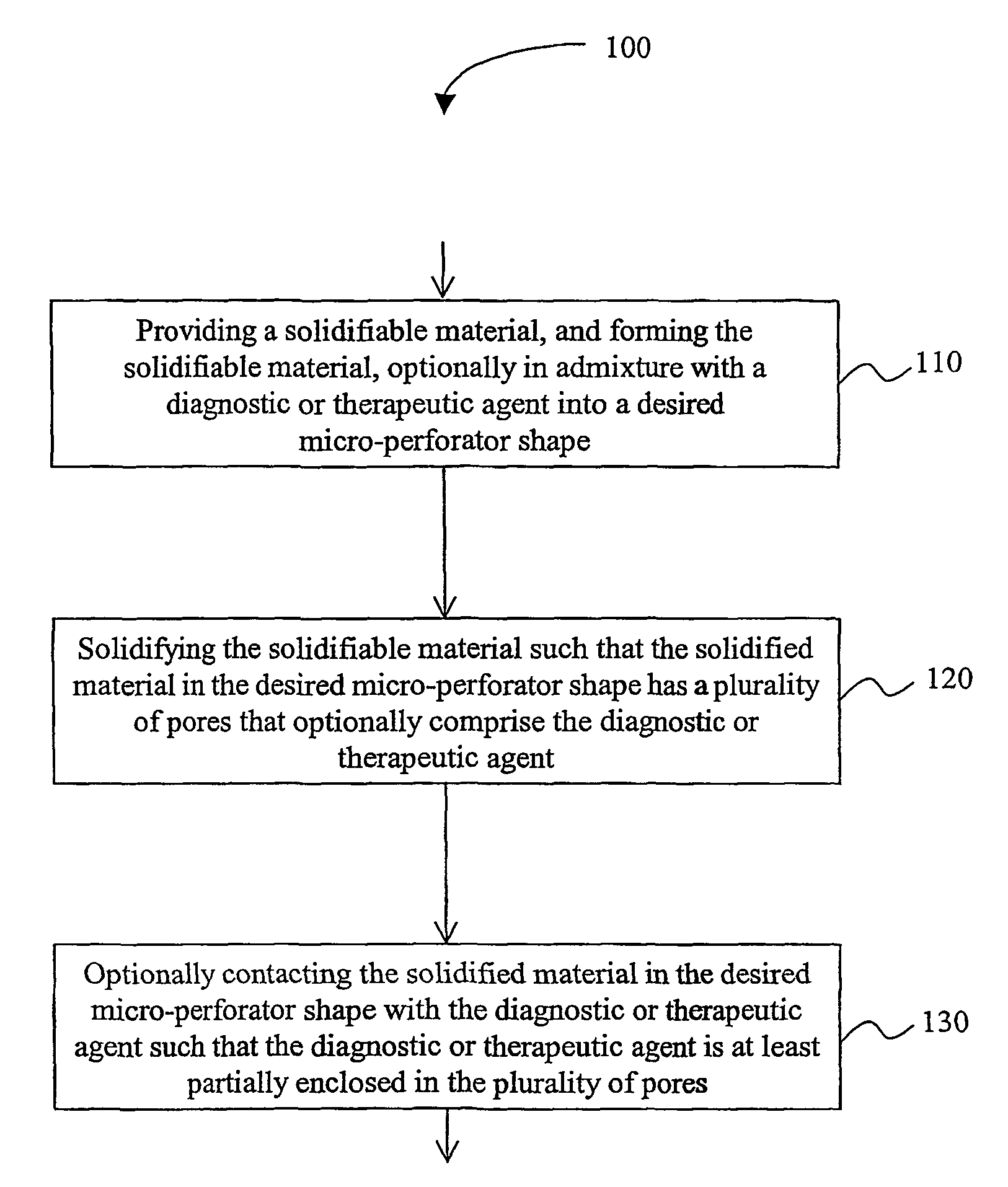Solid micro-perforators and methods of use
a micro-perforator and solid-state technology, applied in the field of solid-state micro-perforators, can solve the problems of ineffective adsorption of most protein drugs, affecting and provoking needle injections, so as to improve the settling effect of solid-state materials and reduce the apex angle
- Summary
- Abstract
- Description
- Claims
- Application Information
AI Technical Summary
Benefits of technology
Problems solved by technology
Method used
Image
Examples
examples
[0076]The following protocols are provided as exemplary guidance for fabrication of suitable micro-perforators and devices therefor.
Sol-gel Process
[0077]Silicate with methanol is mixed with a drug in aqueous solution at 60° C. The so formed gel is molded (e.g., by injection molding, compression molding, or embossing) in a suitable mold for shaping micro-perforators in a desirable shape. The formed material is then aged and solidified. After aging, the gel is dried at 60-10020 C. Porosity in such a process can be adjusted by varying water-to-alkoxide ratio, pH, alkoxide concentration, aging (syneresis) and drying condition. Non-dissolving and biocompatible ceramic needles can be used in delivering drug and sampling body fluid for diagnostic application.
[0078]Sinterable particle like ceramic material is filled into a mold. The temperature and / or pressure is increased up to sintering process start. Once the sintering reaction is complete, the material is cooled down to ...
PUM
| Property | Measurement | Unit |
|---|---|---|
| molecular weight | aaaaa | aaaaa |
| thickness | aaaaa | aaaaa |
| thickness | aaaaa | aaaaa |
Abstract
Description
Claims
Application Information
 Login to View More
Login to View More - R&D
- Intellectual Property
- Life Sciences
- Materials
- Tech Scout
- Unparalleled Data Quality
- Higher Quality Content
- 60% Fewer Hallucinations
Browse by: Latest US Patents, China's latest patents, Technical Efficacy Thesaurus, Application Domain, Technology Topic, Popular Technical Reports.
© 2025 PatSnap. All rights reserved.Legal|Privacy policy|Modern Slavery Act Transparency Statement|Sitemap|About US| Contact US: help@patsnap.com



